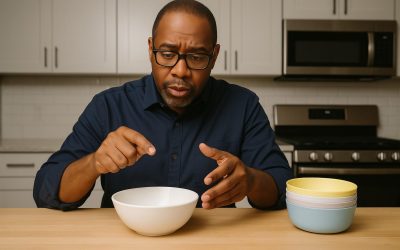As an Amazon Associate I earn from qualifying purchases.
Rice cookers are a cornerstone of convenience in kitchens around the world, effortlessly turning grains into fluffy clouds of comfort. But when this culinary staple suddenly stops working, it can throw off mealtime routines and leave us perplexed about what went wrong. Whether it refuses to turn on, doesn’t heat up, or has stopped functioning correctly, a non-working rice cooker is a problem that demands a solution.
This article aims to demystify the common issues that can lead to a rice cooker’s demise. We’ll delve into the signs of trouble, from the subtle to the obvious, and guide you through the troubleshooting steps that can revive your appliance. From simple fixes that require little more than a keen eye and a gentle touch, to more complex problems that might call for professional intervention, we’ll cover the spectrum of solutions.
As we navigate through these troubleshooting techniques, remember that safety is paramount and that sometimes the best solution is seeking professional help. So, grab your tools and your patience, and let’s embark on a journey to bring back the steamy, delicious goodness of perfectly cooked rice.
How to Fix Rice Cooker Not Working?
If your rice cooker is not working, there are several steps you can take to troubleshoot and potentially fix the issue. Please ensure safety first by unplugging the appliance before attempting any repair. Here are some general steps to follow:
1. Check the Power Source:
- Ensure the rice cooker is properly plugged into the outlet.
- Check if the outlet is working by plugging in another appliance.
- Inspect the power cord for any damage, fraying, or cuts.
2. Examine the Heating Element:
- Look for signs of damage or corrosion in the heating element.
- Ensure that the plate is clean and free from any food debris or residue.
3. Inspect the Internal Components:
- Thermal Fuse: Many rice cookers have a thermal fuse that shuts off the power if the unit overheats. If this fuse is blown, it will need to be replaced.
- Internal Wiring: Check for any loose or disconnected wires inside the rice cooker.
4. Check the Switch and Control Panel:
- Make sure the on/off switch or any buttons are functioning properly and are not stuck or broken.
- Clean around the switch or buttons to remove any residue that might prevent them from working.
5. Look at the Lid and Pot Placement:
- Some rice cookers have safety features that prevent operation if the lid is open or the pot is not correctly placed. Ensure everything is properly aligned and seated.
6. Consult the Manual:
- Look for a troubleshooting section in the user manual specific to your model. It may provide additional insights or steps.
7. Professional Repair:
- If you’re unable to diagnose or fix the issue, consider taking the rice cooker to a professional appliance repair service, especially if it’s a higher-end model or still under warranty.
Safety Notes:
- Never attempt to repair the appliance while it is plugged in.
- Be cautious about disassembling electrical appliances if you are not familiar with safe repair practices.
- If your rice cooker is under warranty, consult the manufacturer or authorized repair center to avoid voiding the warranty.
By methodically checking each potential problem area, you can often identify the issue with a non-working rice cooker. However, if at any point you feel uncertain or if the repair requires handling complex electrical components, it’s best to consult a professional to safely and effectively restore your appliance to working order.
Cleaning and Maintenance
To ensure your rice cooker remains functional and to possibly fix minor issues related to cleanliness and maintenance, here are some steps you can follow. Remember, regular care can often prevent or resolve many common problems.
Regular Cleaning:
- Unplug and Cool Down: Always ensure the rice cooker is unplugged and completely cool before you start cleaning.
- Clean the Inner Pot: After every use, remove the pot and wash it with warm, soapy water. Avoid using abrasive scrubbers on non-stick surfaces. Rinse thoroughly and dry before placing it back in the cooker.
- Wipe the Heating Plate: Clean the heating plate and surrounding area with a damp cloth to remove any leftover rice or residue. Ensure it’s dry before using the cooker again.
- Exterior Cleaning: Wipe down the exterior with a damp cloth. If there are stubborn stains, a mild detergent can be used, but ensure no moisture gets into the electrical components.
- Clean the Lid: Depending on your model, the lid might be detachable for easier cleaning. Wipe it down or wash it as appropriate, ensuring vents or steam holes are clear of debris.
Periodic Maintenance:
- Check Electrical Cord and Plug: Periodically inspect the cord and plug for any damage, fraying, or loose connections.
- Inspect Seals and Gaskets: If your model has a seal or gasket, check for wear, cracks, or deformities. Replace as needed to ensure a proper seal.
- Tighten Loose Parts: Periodically check for any loose components, such as handles or knobs, and tighten them as necessary.
Troubleshooting Tips:
- Dealing with Hard Water: If you have hard water, mineral buildup can occur over time. Use a descaling solution or a mixture of vinegar and water to remove buildup. Ensure to rinse thoroughly afterwards.
- Odor Removal: To remove lingering odors, cook a mixture of water and a few tablespoons of vinegar or lemon juice in the cooker.
Storage:
- Proper Storage: Store your rice cooker in a dry place and avoid stacking heavy items on top of it. If storing for a long period, ensure it’s clean and dry, and leave the lid ajar to prevent odor buildup.
Safety Reminders:
- Never immerse the rice cooker base, cord, or plug in water.
- Follow the manufacturer’s instructions for cleaning and maintenance specific to your model.
- Avoid using metal utensils or abrasive cleaners that can scratch non-stick surfaces.
By adhering to these cleaning and maintenance practices, you can often prevent or fix issues causing the rice cooker not to work. Regular care not only ensures the longevity of your appliance but also maintains its performance, ensuring delicious results every time you use it.
Professional Repairs
When a rice cooker stops working and requires professional repair, here’s how the process typically unfolds:
1. Professional Diagnosis:
- Initial Check: The technician will first perform a visual inspection and check common issues like the power cord, plug, and any visible damage.
- Functional Test: They might try to turn on the rice cooker to understand the nature of the problem — whether it’s not heating, not turning on, or any other irregularities.
2. Safety Inspection:
- Unplugging: Ensuring the appliance is unplugged before opening it up.
- Checking Components: The technician will check critical components that might affect safety, such as electrical wiring, the heating element, and thermal fuses.
3. Disassembly and Component Testing:
- Accessing Internal Parts: The technician will carefully disassemble the rice cooker to access the internal components.
- Testing with Tools: Using tools like a multimeter, they’ll test various parts such as the heating element, thermostat, and thermal fuse for continuity and functionality.
4. Identifying and Fixing the Issue:
- Component Replacement: If a specific part is found to be faulty, such as a broken thermal fuse or a malfunctioning switch, they’ll replace it with a compatible part.
- Soldering and Repairing: In some cases, there might be a need for more intricate work like soldering loose wires or fixing connections.
5. Reassembly and Testing:
- After repairs, the technician will reassemble the rice cooker and conduct tests to ensure that it’s working correctly. This might include running a water-only cycle to check that the cooker heats and functions as expected.
6. Quality Assurance and Warranty:
- A reputable repair service will often provide a warranty or guarantee for their work, ensuring that any repairs are durable and reliable.
7. Maintenance and Care Advice:
- Post-repair, technicians might provide advice on how to better maintain your rice cooker, extending its life and preventing future issues.
Considerations for Professional Repair:
- Cost vs. Replacement: Consider the repair cost versus replacing the appliance, especially for older or lower-end models.
- Expertise: Ensure the technician has experience with small kitchen appliances or specifically rice cookers.
- Parts: Verify that they use quality parts for replacements, preferably from the original manufacturer.
Professional repair is advisable when the issue is complex, the rice cooker is expensive or under warranty, or when you’re unsure of how to proceed safely with repairs. A professional brings the necessary tools, skills, and safety precautions to effectively diagnose and repair the appliance, ensuring it’s done correctly and safely.
Frequently Asked Questions (FAQ’s)
When seeking expert advice on fixing a non-working rice cooker, you might have several questions about the process, safety, and when to seek professional help. Here are some common questions along with the type of answers an expert might provide:
Question: What are the most common reasons a rice cooker stops working?
Expert Answer: The most common reasons include a malfunctioning heating element, a broken or loose power cord, a damaged internal switch, or a blown thermal fuse. Over time, components can wear out or suffer damage from overuse or power surges.
Question: Is it safe to repair a rice cooker myself?
Expert Answer: For simple issues like cleaning or tightening a loose cord, it’s generally safe to do it yourself with the appliance unplugged. However, when it comes to electrical repairs or dealing with the heating element, unless you have experience and the right tools, it’s safer to consult a professional to avoid the risk of electric shock or further damaging the appliance.
Question: How can I diagnose the problem with my rice cooker?
Expert Answer: Start by checking the power supply, including the cord, plug, and outlet. Look for any visible signs of damage or wear. If there’s no obvious external issue, the problem might be internal, such as a blown fuse or faulty wiring. Diagnosis often requires opening up the appliance and using a multimeter to test components, which might be better left to professionals.
Question: How much does it typically cost to get a rice cooker repaired professionally?
Expert Answer: The cost can vary based on the nature of the problem, the model of the rice cooker, and local service rates. Simple fixes might be relatively inexpensive, while more complex issues can cost more. Often, the service will charge a diagnostic fee plus the cost of any necessary parts and labor. It’s worth comparing the repair cost to the price of a new rice cooker, especially for older or basic models.
Question: Can I prevent my rice cooker from breaking down?
Expert Answer: Regular maintenance can significantly extend the life of your rice cooker. This includes cleaning it after each use, ensuring the vent is clear, checking cords and connections, and avoiding overfilling or improper operation. Also, be gentle when using and storing it to prevent physical damage.
Question: When is it better to replace rather than repair a rice cooker?
Expert Answer: Consider replacing your rice cooker if the cost of repair is high compared to the price of a new one, if it’s an older model and might soon have other issues, or if newer models have features or efficiencies that make replacement more advantageous. Also, if you’ve had repeated problems or the appliance has a history of poor performance, investing in a new one might be more cost-effective in the long run.
These questions and answers provide a framework for understanding how to approach a non-working rice cooker, emphasizing the importance of safety, proper diagnosis, and knowing when to seek professional help. If ever in doubt, consulting with a professional is often the safest and most effective approach.
Conclusion
In conclusion, tackling the issue of a non-working rice cooker can range from simple fixes like checking the power source and cleaning the appliance to more complex tasks such as replacing internal components. The journey to resurrecting your beloved kitchen companion starts with understanding the common problems and progresses with systematic troubleshooting. Safety is paramount; always unplug the appliance before attempting any fixes and be acutely aware of the dangers of handling electrical components if you’re not experienced.
Regular maintenance and timely cleaning can prevent many issues from arising, ensuring that your rice cooker continues to serve you well. For those problems that do crop up, a methodical approach often resolves simpler issues. However, when the problem is complex or the repair is beyond your comfort zone, seeking professional help is the wisest path. They bring expertise, safety, and efficiency to the table, ensuring that your appliance is repaired correctly.
Ultimately, the decision to repair or replace will depend on factors like the age and model of your rice cooker, the cost of repair, and the sentimental or practical value of the appliance to you. Weigh these factors carefully, armed with the knowledge you’ve gained about the intricacies of your rice cooker’s function and maintenance.
Remember, a well-functioning rice cooker is more than just a convenience; it’s a tool that brings efficiency and joy to your cooking routines. By taking the time to understand and care for it, you ensure many more meals of perfectly cooked rice. Whether you choose to embark on DIY repairs, consult professionals, or perhaps upgrade to a new model, you’re now equipped with the knowledge to make informed decisions on the path to a fully operational rice cooker.






